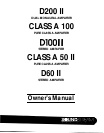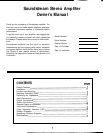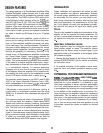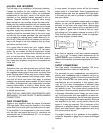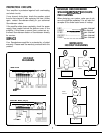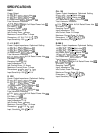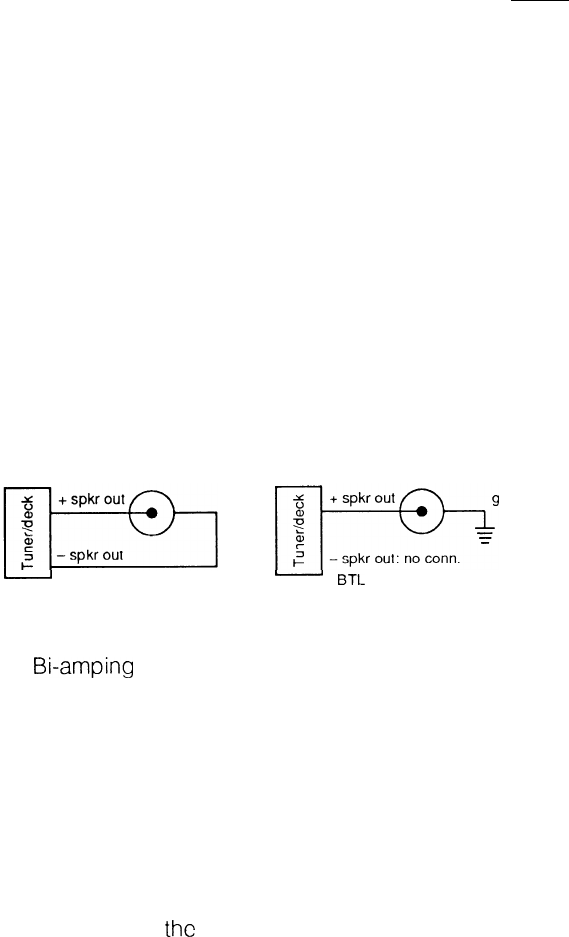
LOCATION
AND MOUNTING
The first step in an installation is thorough planning.
Choose the location for your amplifier carefully, The
amplifier should be located in either the passenger
compartment or the trunk, never in the engine com-
partment or any outside location exposed to dirt or
moisture. Adequate ventilation is important; allow enough
space so that air can circulate around the heat sinks.
Make sure the installed amplifier will not interfere with
normal operation of the vehicle. It is best not to locate
the amplifier near your vehicle antenna, since the switch-
ing power supply may interfere with AM reception. Your
amplifier should be mounted firmly to the car’s chas-
sis with the four screws provided. Use your amplifier
as a template for making pencil marks where you in-
tend to drill. (Make sure that the location you are plan-
ning to drill through is free from obstacles such as wiring,
gas tanks, and fuel lines.)
It is a good idea to bench test your system before
mounting the components. If you have a 12 volt power
source, you can connect and test all components outside
the car. Or, you can connect them inside the vehicle
prior to final mounting. Either way, connect the com-
ponents exactly as you intend to in the final installa-
tion; make sure all power and ground connections are
made last.
WIRING
Determine how your vehicle’s wiring is laid out. Keep
all wiring inside the car. Good standard audio prac-
tice suggests keeping signal wires short and away from
wires carrying power. Wires may be run under carpet.
If you drill a new passage hole through metal, make
sure that all burrs have been filed away to prevent
scraping; use grommets where needed. All wires should
be hidden; an exposed wire can inadvertently be pulled,
causing disconnection or shorting. Wires should never
be under tension or subject to moisture, Use cable ties
to bundle excess wire.
NOW THAT ALL AMPLIFIER ADJUSTMENTS HAVE
BEEN MADE, YOU ARE READY TO BEGIN MAKING
CONNECTIONS.
INPUT CONNECTIONS
Inputs to your amplifier attach by means of standard
RCA type jacks. When using the amplifier in the stereo
mode, both the left and right input jacks are to be used.
If the amplifier is to be operated in the mono mode,
only the right input should be used. For connection we
recommend use of Soundstream DL-1 or an equiva-
lent premium cable.
In most cases, the signal source will be the preamp
output jacks of a tuner/deck. Some tuner/decks use
preamp outputs other than the standard RCA type jacks,
in this case you will need to purchase a special adapter
from your dealer.
If your head unit has speaker outputs and no preamp
outputs, you can use the speaker outputs. Wire an RCA
connector to the head units output wires. Before doing
so, determine if your head unit has a standard or BTL
type output.( A good rule of thumb is that any head
unit putting out 5 true watts a channel or more is BTL)
Once this has been determined, follow the appropri-
ate wiring diagram located below.
nd
-
STANDARD
-
BTI-
If you have an equalizer or low level crossover network(s)
for
Bi-amping
or Tri-amping, these components will be
inserted between your tuner/deck and your amplifier(s).
Refer to the manuals for these components for further
details.
OUTPUT CONNECTIONS
Use high quality Soundstream Speaker 130 or an
equivalent premium cable for best results.
The terminals on your loudspeakers are marked for
polarity, and loudspeaker wire is coded by color or by
the markings on
the
jacket. Be sure to connect the left
and right channels with the same polarity Loudspeaker
manufacturers are not consistent in their polarity mark-
ings, so if you have loudspeakers of different types
connected to the same amplifier terminal, verify cor-
rect polarity by ear. The correct polarity produces the
most bass: incorrect polarity produces less bass and
a strangely dislocated sound image on mono mate-
rial. If you have more than one amplifier; for each am-
plifier and its loudspeakers, the left and right channels
must always be wired with the same polarity. But from
one amplifier to the next, correct polarity may be the
same or it may be reversed. This is because of the
difference in amplifier design, the nature of crossover
filters, and other factors. Again experiment and verify
the correct polarity by ear.
For proper hookup of your speakers to the amplifier,
review the diagrams on page five for stereo and bridged
hookup.
3



